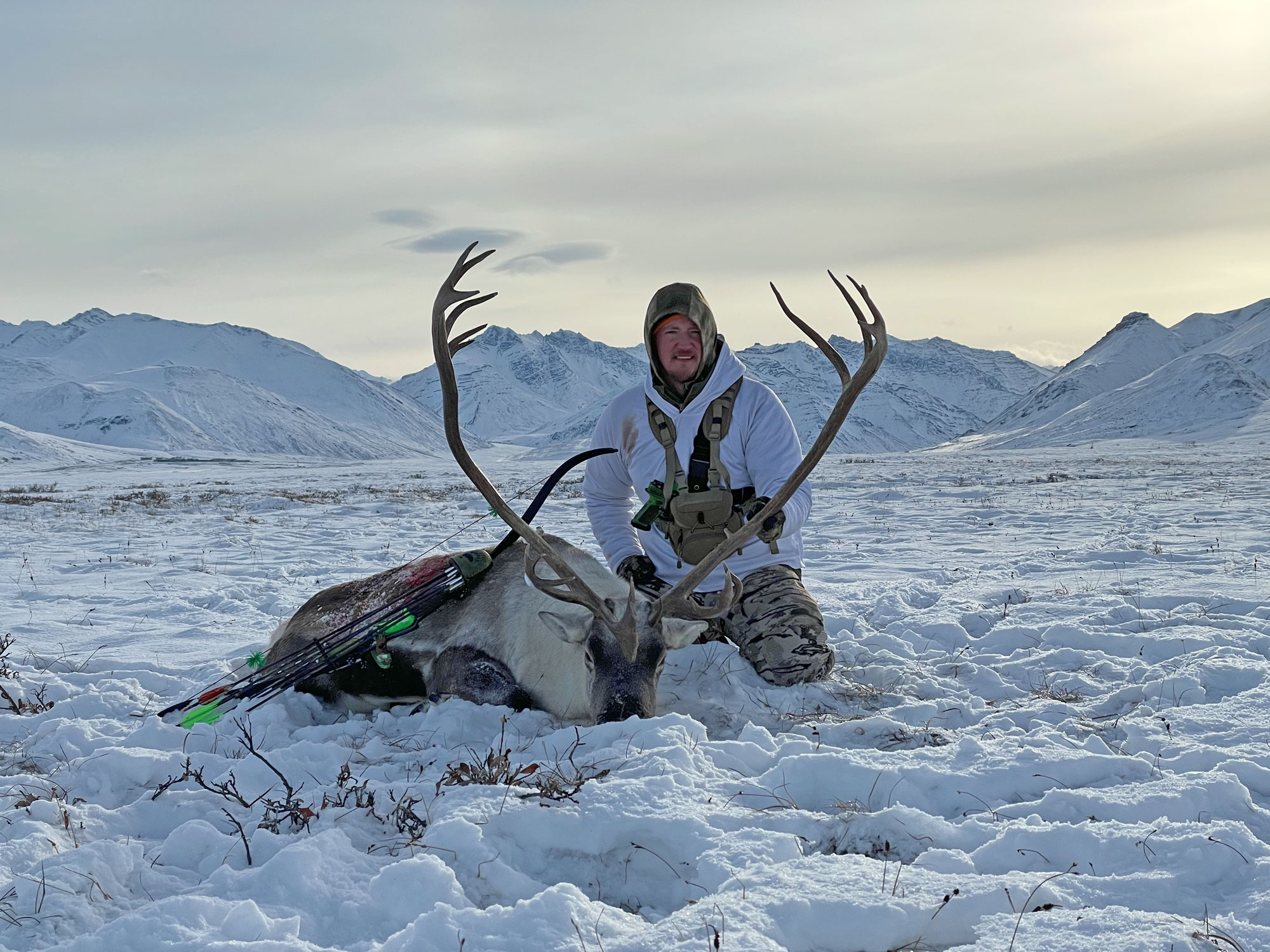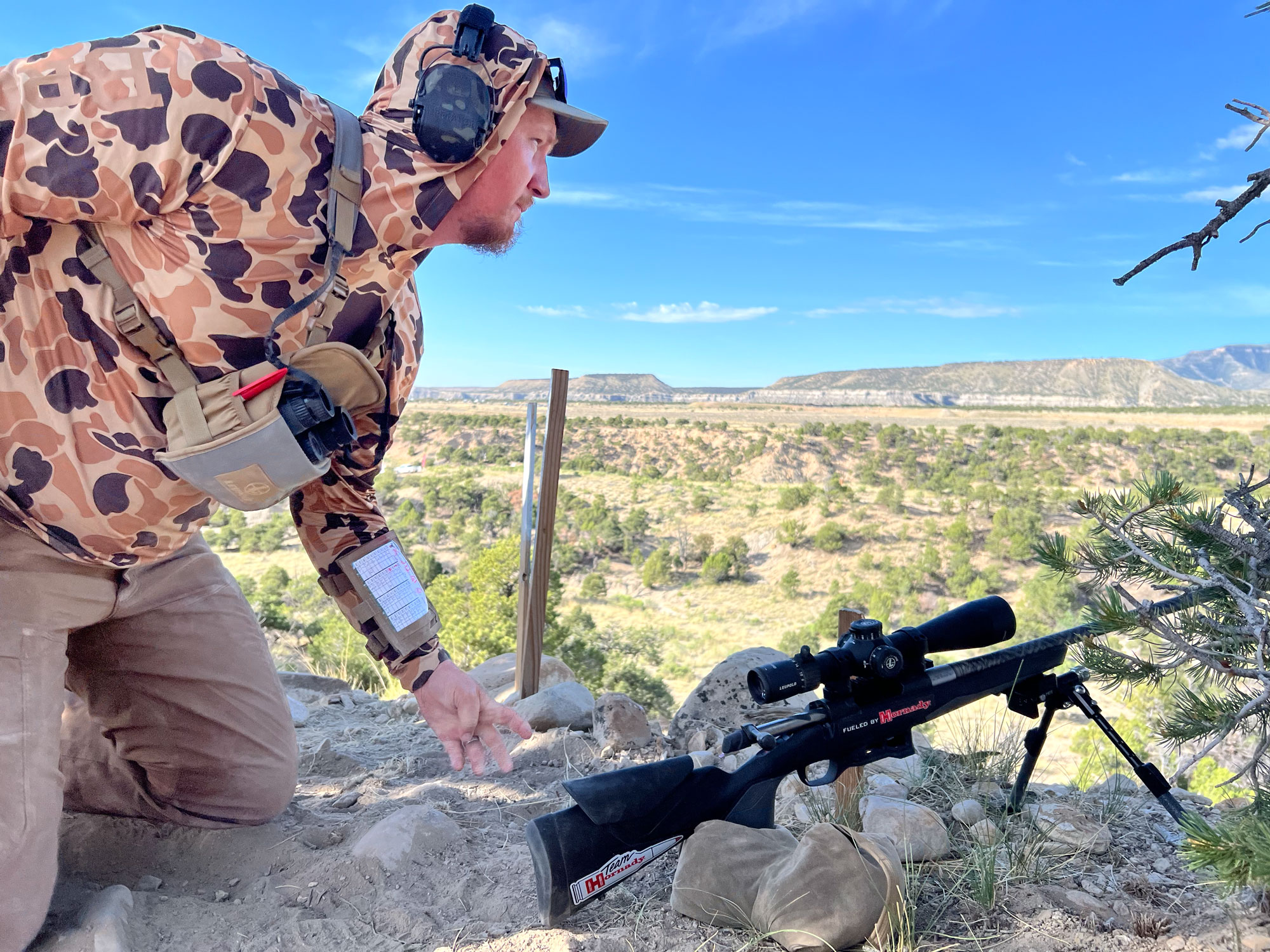The excitement that comes with a shot opportunity is something any seasoned hunter can relate to. Along with that, just about every hunter has experienced what I like to call hunter amnesia in one form or another. The dump of adrenaline that surges through your body when your target buck steps into a shooting lane, or when you see a big bull caribou’s antlers coming toward you over the top of a cut bank, is like nothing else. And like nothing else, it’s a phenomenon that can leave you looking at an empty set of tracks in the dirt wondering, What the hell just happened?
What Is Hunter Amnesia?
Hunter amnesia isn’t anything mysterious. In fact, we all experience it to some degree. It’s essentially a manifestation of buck fever. The interesting thing about hunter amnesia is that it can completely wipe the memory of even the most stalwart hunter who might have blanked on everything other than that he took a shot.
My long-time hunting partner Frank Schultz describes the phenomenon perfectly when recounting the tale of his first whitetail deer. He was 11 years old, hunting near his home in Vermont, when he shot a spike buck with his cut-down single-shot .30/30. When his dad Hugh came to help find the buck, Frank’s memory was blank. He couldn’t remember which direction the deer had run, where he had shot it, and even became unsure that it was a buck at all. The deer didn’t bleed immediately, and the patchwork of tracks made his trail indistinguishable. Eventually, they found the lung-shot buck piled up a short distance away, but Frank still says that there’s a period of time between shooting and finding the buck that he has no memory of.
Hunter Amnesia Is Important to Understand
Most examples of hunter amnesia aren’t extreme, but it’s common to forget or misremember key details from a shot you just took. Where were your crosshairs when you broke the trigger? Where did the arrow impact? Was the animal quartering to or quartering away? Did it run left or right? These are all simple things to observe, but in the heat of the moment, your brain won’t always record this information accurately. Sometimes those details are key to recovering your animal.
Read Next: How to Blood-Trail a Deer
I recently stood over a pool of bright-red muscle blood on the ground, where a hunter and his guide were confident that he’d made a lung shot on a buck. They had even seen the deer bed down. Tracks and the delicate weeds, however, indicated that it had remained standing for a long time before running off. Video later showed that it was a muscle hit in the neck — nearly 24 inches off target. If the hunter had immediately recognized that, they could have perhaps made a quick follow-up shot on the buck and recovered it. Many of the professional deer trackers we’ve interviewed have noted that it’s common for hunters to misremember their shots and even the direction a deer ran afterward.
I have second-guessed good shots I’ve made, and misremembered some important details on bad ones, too. Only last week I shot a mule deer — my first. I remember taking a perfectly broadside shot. After skinning the deer, however, the slug recovered in the off-side hip told a different story. I’d been diligent enough to set up and make a good enough shot, but I had failed to process how sharply the buck had been quartering toward me.

Seeing But Not Remembering
It seems odd that we can experience such an intense situation and misremember many of the important details. Think about it like remembering a person’s name: When a person I’ve just met tells me their name in conversation, it often goes in one ear and out the other. It’s only when I must embarrassingly ask again that I purposefully focus and retain that information. If someone told you ahead of time that they’d pay you a hundred bucks for every name you remember at a social gathering, you’d focus and remember a lot more names.
When it comes to hunter amnesia, the problem isn’t that we are truly forgetting, but that we aren’t focusing on the details of the situation in real time. If you make a perfect shot and it was all a blur, there’s no harm done. But without purposeful focus, you are much more likely to make mistakes in both your shooting and judgement.
How to Combat Hunter Amnesia: Develop and Follow a Shot Process
Bowhunters aren’t immune to hunting amnesia either and, in fact, have some of the best tools to combat it. Because an archery shot usually requires a more complex set of actions than shooting a rifle, successful archers tend to be better at this than your average Fudd. Rifle hunters have a tendency to operate with a “good enough” attitude when shooting at game, particularly if they think their cartridge is large enough to make up for a bit of shooter error. Get the crosshairs near the vitals and pull the trigger. Sometimes that’s good enough.
While there is a time and place for acting quickly to seize an opportunity, you will be more effective and ethical if you stick to a specific shooting process.
My good friend and archery coach Tom Clum of Rocky Mountain Specialty Gear sees the issue constantly. He’ll refer to it as lizard brain or blacking out: running on autopilot rather than staying cognitively present through each step of the shot process. Your brain naturally wants to default to automatic in intense or stressful situations, but being purposeful and focused on the situation, animal, and shooting process allows you to absorb information more effectively.

Many hunters who don’t practice their shooting much tend to operate in that autopilot mode at the moment of the truth. To avoid this, you should develop a specific process you follow when firing each shot, focusing on the target, your breathing, and trigger squeeze. The old mantra “Aim small, miss small” is a cliché, but it’s accurate. If you’re focused on exactly where you’re aiming, you’re also paying attention to the animal’s position and your shot process.
Your shot process doesn’t have to be complicated. When preparing to shoot an animal, I’ll set up my position, adjust my optic settings if necessary, and acquire the animal. When a good shot presents itself, I place the crosshair exactly where I want to hit and let it float there as I turn my attention to slowly pressing the trigger. While pressing the trigger, I focus only on that, while watching through the scope. As the shot breaks, I don’t break concentration or look above the scope. I want a follow through that allows me to see the shot impact if possible.
After the Shot
A few weeks ago I’d done a good job staying focused, following my shot process, and knew exactly where I’d hit a nice West Texas whitetail buck. He’d been quartering toward me, and I put the bullet right on his shoulder. As he pivoted and ran, his body was low to the ground in a desperate, stumbling gallop, I knew I’d made a good shot. He zipped through some cedar trees and I swore I saw him hook back to the left. We followed a clear, steady blood trail for 55 yards, but saw no tracks or blood where we thought we saw him make his turn.
He was lying dead, just spitting distance to our right, and had never actually cut back to the left. Tracks and blood made it appear that he’d spun around, and perhaps my brain embellished what my eyes saw.
Staying focused after the shot should be a part of your shooting process too. Your inclination will be to look over the scope or sight to see the result of the shot and it’s easy to give yourself over to the rush of adrenaline that follows. I’ve watched several people shoot arrows and cleanly miss a bear, swearing that the arrow was on target and passed through. Many rifle hunters fire a shot, only to have no idea whether they hit the animal — never mind where.

As part of your process, you should focus intensely on calling your shot and spotting your impact if possible. Calling your shot is essentially asserting where you thought the crosshairs were at the exact moment the shot broke. This is especially important if you’re shooting heavy recoiling or magnum cartridges. If you’re simply putting your scope on hair and pulling the trigger, you will have no idea where you hit.
Even more beneficial is spotting your own shot impacts. This isn’t easy at close range, but lighter cartridges make it more viable. When shooting that Texas buck from 115 yards with a .223, I never even lost my sight picture. Hunters can still make good shots with big magnum rounds, but they are exponentially more disruptive and difficult to spot hits with. If that’s what you want to use, focus intensely on calling all your shots and resist the temptation to think that your caliber will make up for hasty shooting or poor shot selection.
Because bears often don’t bleed much, hunting them in heavy cover has taught me the importance of intensely watching and listening after the shot. A well-hit animal is nearly always dead right in the vicinity of where they were last seen or heard, and recognizing the signs of a poor hit can help you take the proper steps to recover an animal or finish the job quickly. It’s easy to mentally check out immediately after the shot, but don’t.
Training to Prevent Hunter Amnesia
Quality practice is extremely helpful to keep you focused on the right things in a hunting situation, which will help prevent amnesia. Practice under pressure is even more helpful. If you want a crash course in improving both your practical shooting skills and your focus, or even if you think you don’t need it, go shoot an NRL Hunter match. Not only will it humble you, it will give you a thorough workout in gear manipulation, position building, target acquisition, conditions evaluation, shooting, and after-shot focus.

Signing up for the skills division is more affordable than the competition classes and allows you to get help from a mentor or the stage RO. What’s equally beneficial as your own practice, is watching how top-level shooters operate. It’s not just plain shooting skill, but the honed ability to focus on all the details necessary to set up, execute, and spot shots that equips them for success at a match and in a hunting situation.
Some hunters will argue that things happen too quickly in real life to follow a shot process. This is false. What you’ll witness when observing top level shooters is that you can speed up or slow down your process as necessary, but that only comes with diligent practice. An animal’s movement or position might require you to act quickly, but even in those circumstances, following your process will keep your head in the game.
Read Next: Shooting Drills and Skills for Deer Hunters
Understanding what causes us to black out when we get a hard-earned shot opportunity in the field is simple. So is the solution. Doing the work to better equip yourself requires some diligence. The good news is that practicing with a purpose will not only help you shoot better, it will ensure that you remember the details of your good shooting.

